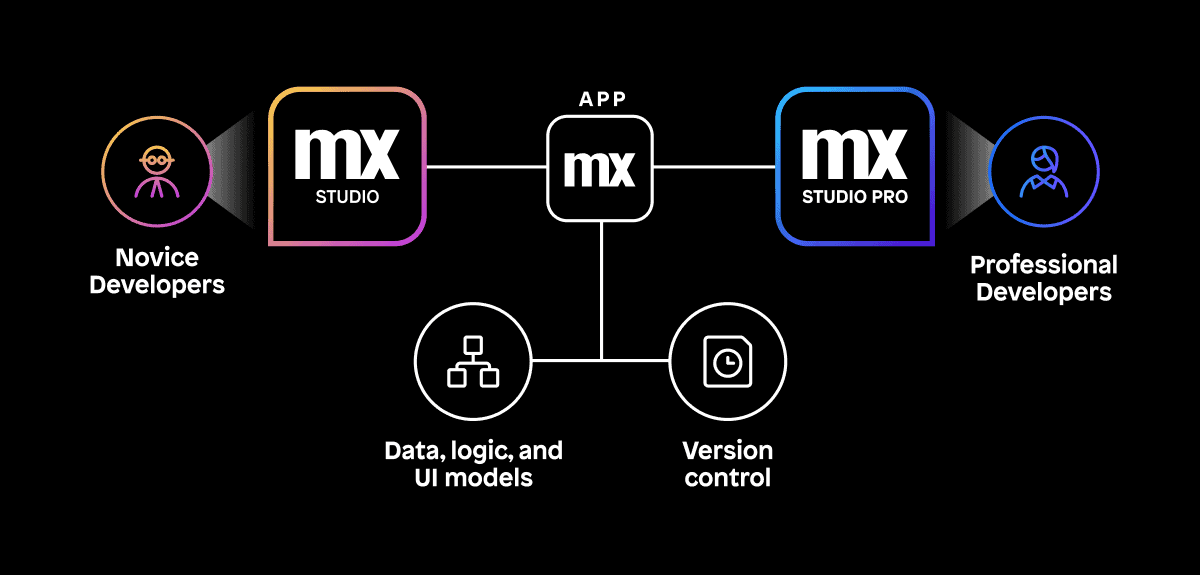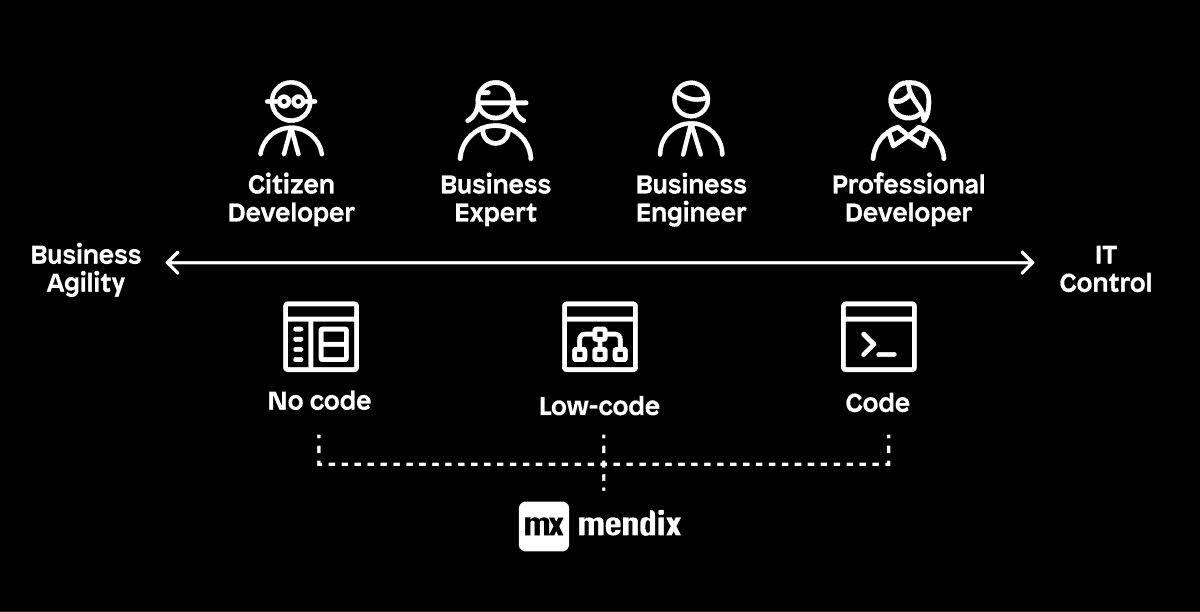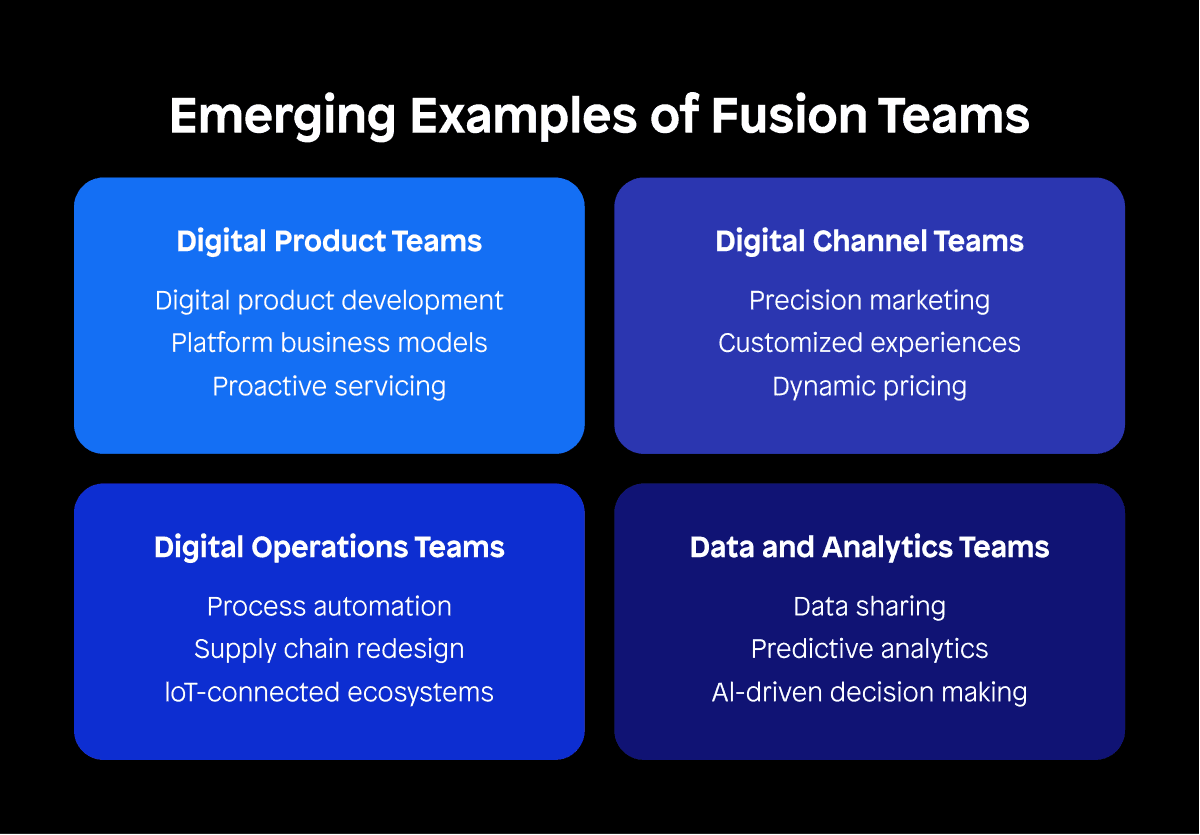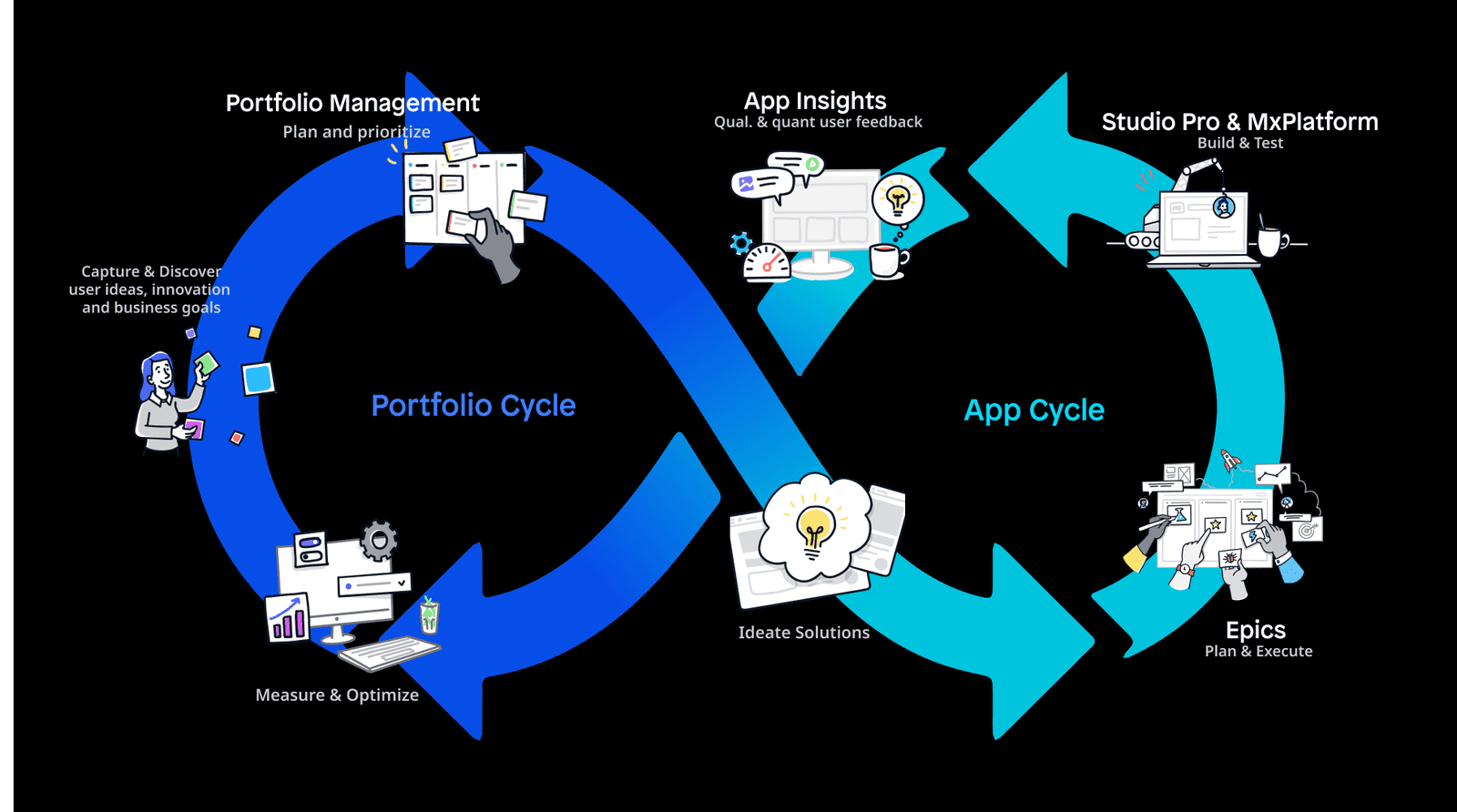For businesses to execute digital transformation effectively, we at Mendix are seeing an unmistakable trend of shifting more technology and development from IT to the business, closing the gap between solution development and the value that gets delivered.
The developer spectrum is changing, and we are doubling down on our efforts to support the entirety of that spectrum.
This is why we’re excited to share that we are fusing Mendix Studio and Studio Pro in our upcoming Mendix 10 release in June 2023. We’ll have one IDE targeted at developers with different skill levels and backgrounds to collaborate with business stakeholders to build better apps faster and deliver value more quickly—from straightforward departmental apps to large-scale, mission-critical systems.
We are announcing this now because Mendix 9.20 will be the last minor release for Studio, where Studio and Studio Pro work together. Mendix 9.21 (releasing soon) will only feature Studio Pro.
Why the fusion
Fostering business and IT collaboration is in the DNA of the Mendix Platform.
Customers across the globe leverage our platform to accelerate digital transformation, bringing together developers, product owners, business experts, and UX designers (to name a few).
For many years, Mendix has been recognized as a leader by analysts for bringing no-code and low-code development together with a dual-IDE approach. Studio and Studio Pro are based on the same modeling language and a single model repository. Bi-directional integration between the two IDEs ensures that nothing gets lost in translation.

What we’re seeing is that the lines between no-code, low-code, and code are blurring. There’s increasing diversity and fluidity in the developer spectrum. As the low-code market matures, it’s our charge to best support our customers and continue to deliver a product that meets the needs of a modern enterprise. Old definitions of the spectrum, based on coding affinity only, no longer reflect the heterogenous group of people involved in software development.
The developer spectrum is changing, and we’re seeing it firsthand.
Recently, I had the pleasure of joining a final presentation of a proof-of-value engagement at a large logistics services provider. A team of five—consisting of a product owner from HR, two experienced developers, a business developer, and a UI/UX expert—spent three days building an application that helped recruit and onboard new employees. From scratch. The end result was mind-blowing. More importantly, the product owner from HR spoke in superlatives about the experience of being in the driver’s seat when it came to the application’s scope and design.
We’re seeing changes in the behavior of our customers in how they’re using the Mendix Platform. No-code features like the capability to start app development from an Excel import are popular among professional developers in our community. Low-code features such as the rich expression editor that allows for condition configuration for activities and decisions in workflows, microflows, and pages are frequently requested by business technologists. UX experts warmly welcomed the tuning CSS-styling tool.
We’re also seeing novice developers, once acquainted with low-code development, rapidly advance their development skills and feel comfortable moving from Studio to Studio Pro.
Our aim is to continue to be laser-focused on delivering you a top-notch developer experience from a single IDE, no matter the skill level.

This is why we’re fusing Studio and Studio Pro together. This will start with Mendix 10. What this means for current users is that we will extend what is now Studio Pro with many features and experiences that Studio currently offers, such as theme customizer, start-from-Excel, in-context help and learning, and simplified data filtering.
We’ve also perfected capabilities found in Studio Pro, like version management and fine-grained conflict merging. Anyone with a professional development background will acknowledge the criticality of version management for effective collaboration.
Why Fusion Teams
The changes we see in how organizations are building solutions and delivering value aren’t just happening with our customers. We’re seeing this change reflected in the market, too.
Neither the business nor IT can support the accelerating pace of business change alone. Organizations need to embrace and strengthen their business-IT collaboration, and they’re starting to do this with Fusion Teams. Fusion Teams consist of a mixed group of business technologists with close domain expertise and professional developers that work in the software development lifecycle together to develop value-driving applications.

At Gartner Symposium in Barcelona last month, one of the highlights was a session delivered by Yefim Natis, “Strategic Trends in Application Platforms and Architecture.”
Natis shared some interesting findings from research among CEOs and CIOs:
- 67% of CEOs want more technology work done directly within business functions, and less in IT
- 73% of managers outside IT want more technologies on their teams immediately or in the near future
These numbers reflect a rise in Fusion Teams as a way by which organizations are overcoming the challenges of digital transformation.
A rise in Fusion Teams doesn’t mean that corporate IT necessarily loses power or influence. Quite the contrary. It’s incumbent upon IT to provide Fusion Teams with the right technologies and processes to create value-driving applications. Business and IT have a joint responsibility for governance adhering to business processes, security, and compliance.
Gartner supports this notion. In its report “Fusion Teams: Democratized and Distributed Technology Delivery for Digital,” it confirms that the “CIO’s strategic reach grows as IT equips and empowers others to use and build digital capabilities.” It also cites that, as of 2021, IT staff were already reporting more collaborations with business technologists.
With its foundation steeped in IT-business collaboration, the Mendix low-code Platform is an ideal environment for Fusion Teams. Visual development, abstraction of complex technologies, and deployment automation enable multidisciplinary teams of different skills and expertise to collaboratively build solutions at unprecedented speeds.
Continuous Collaboration
Our ambition to improve business and IT collaboration doesn’t stop with opening up the boundaries of the Mendix IDE. Mendix covers the entire application lifecycle, taking a BizDevOps approach.
We will soon release a portfolio management capability to help Fusion Teams better identify project candidates, estimate complexity, and determine business value. We’ve also recently released Epics, a requirements and project management capability to help manage project scope and track progress on commits in Studio Pro.
Our feedback widget allows business super users to be constantly engaged in development. During testing, they can provide screen-by-screen feedback to the development team. This hastens testing and leads to a quicker release time and a faster time-to-value.
Future releases will concentrate on this notion of continuous collaboration.

What’s next?
As stated, we’re working hard on our next major release. We continue to bring monthly releases on Mendix 9, targeting 9.24 to be our Long Term Support release.
One of the reasons why we wanted to announce this change to Studio and Studio Pro is to make you aware that Mendix 9.20 will be the last minor release for Studio, where Studio and Studio Pro work together. Mendix 9.21 will only feature Studio Pro.
Until Mendix 10 becomes GA, Studio will be online and will work with Mendix versions up to 9.20.

